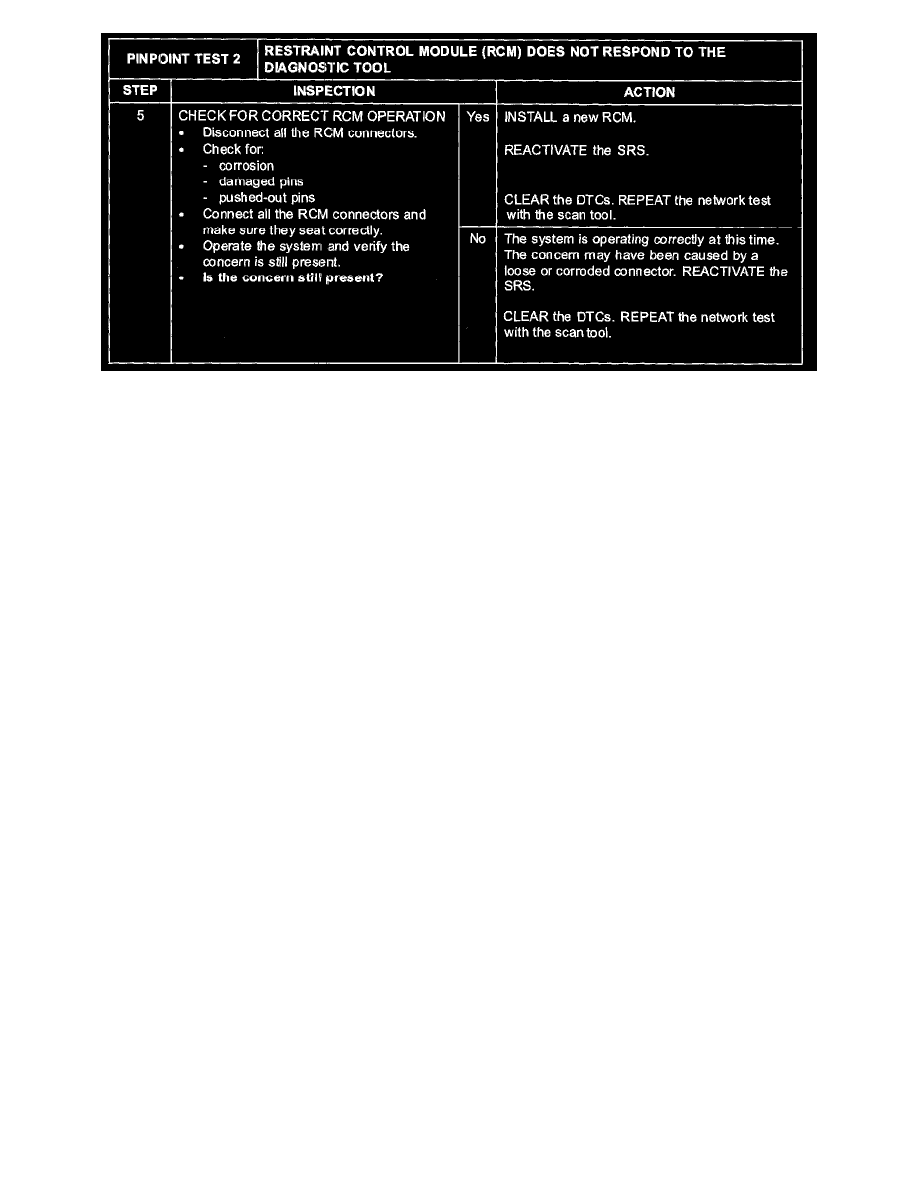B3000 V6-3.0L (2007)

Step 5
Normal Operation
The RCM communicates with the scan tool through the high speed controller area network (HS-CAN). Circuits (W/L) (HS-CAN +) and (W) (HS-CAN
-) provide the net-work connection to the RCM. The RCM module shares the HS-CAN with the powertrain control module (PCM), the four wheel drive
(4WD) module, the occupant classification sensor module, the smart junction box (SJB), and the instrument cluster. Voltage for the RCM is provided by
circuit (GY/Y), and the RCM is case grounded.
Possible Causes
-
SJB fuse 8 (10 A)
-
Circuit (W/L) open (HS-CAN +)
-
Circuit (W) open (HS-CAN -)
-
Circuit (GY/Y) open
-
Case ground open
-
RCM
WARNING:
-
Restraint system diagnostic tools are for service only. Tools must be removed prior to operating the vehicle over the road. Failure to
remove restraint system diagnostic tools could result in injury and possible violation of vehicle safety standards.
-
Never probe the connectors on the air bag module. Doing so can result in air bag deployment, which can result in personal injury.
-
The safety belt pretensioner is a pyrotechnic device. Always wear safety glasses when repairing an air bag equipped vehicle and when
handling a safety belt buckle pretensioner or safety belt retractor pretensioner. Never probe a pretensioner electrical connector. Doing so
could result in pretensioner or air bag deployment and could result in personal injury.
CAUTION: Use the correct probe adaptor(s) when making measurements. Failure to use the correct probe adaptor(s) may damage the
connector.
NOTE: The SRS must be fully operational and free of faults before releasing the vehicle to the customer.
Pinpoint Test 3: Anti-Lock Brake System (ABS) Module Does Not Respond to the Diagnostic Tool
PINPOINT TEST 3: ANTI-LOCK BRAKE SYSTEM (ABS) MODULE DOES NOT RESPOND TO THE DIAGNOSTIC TOOL
